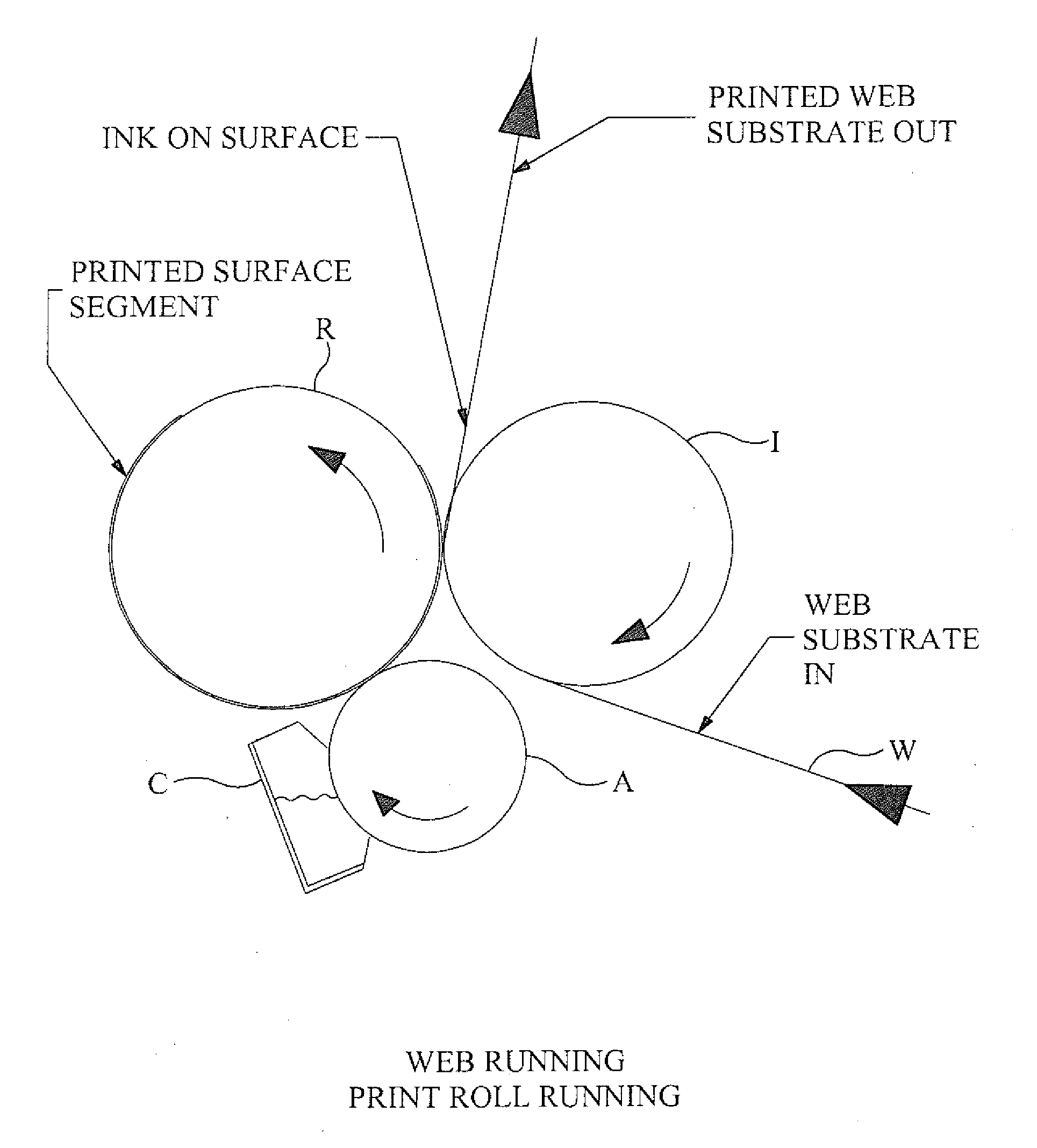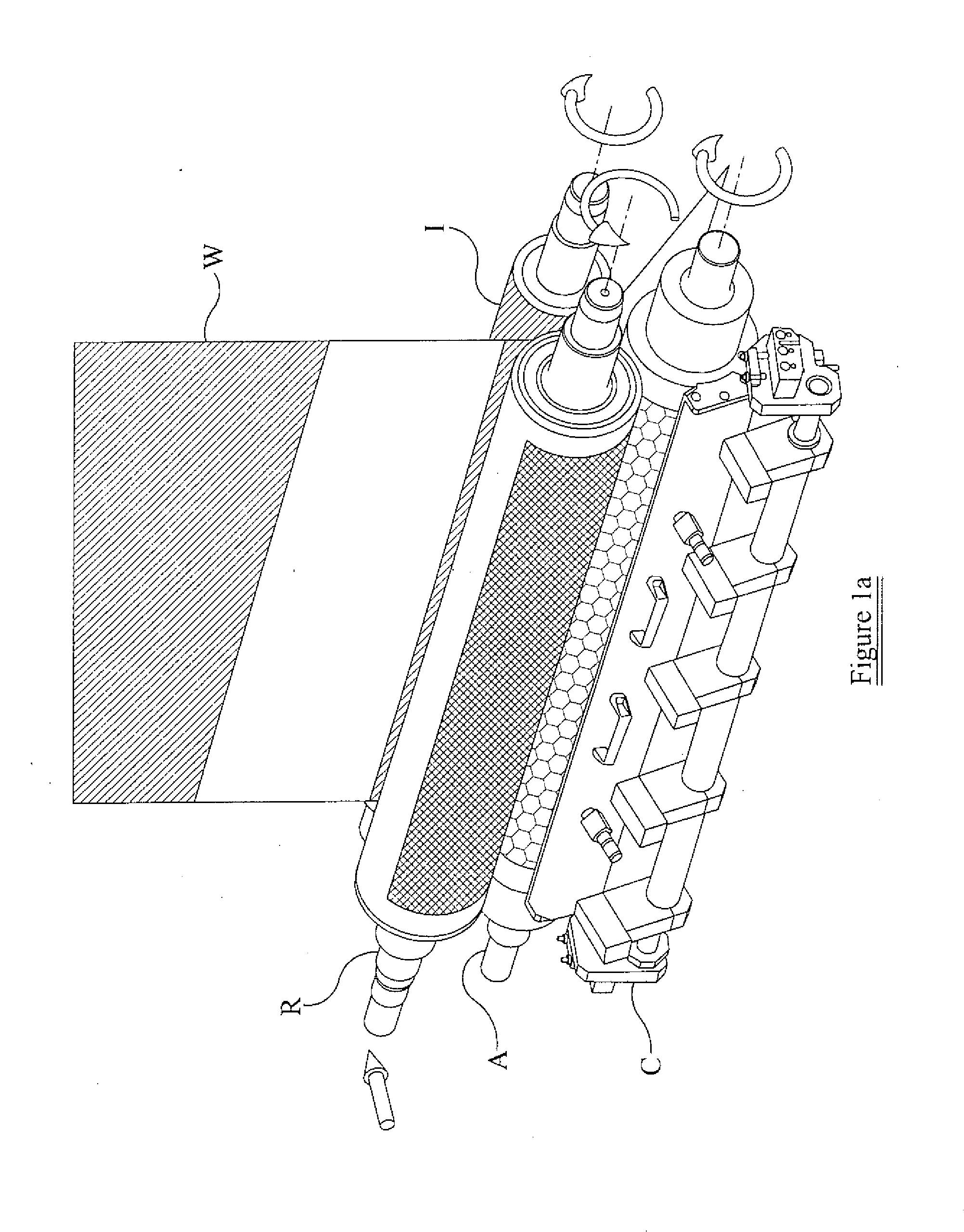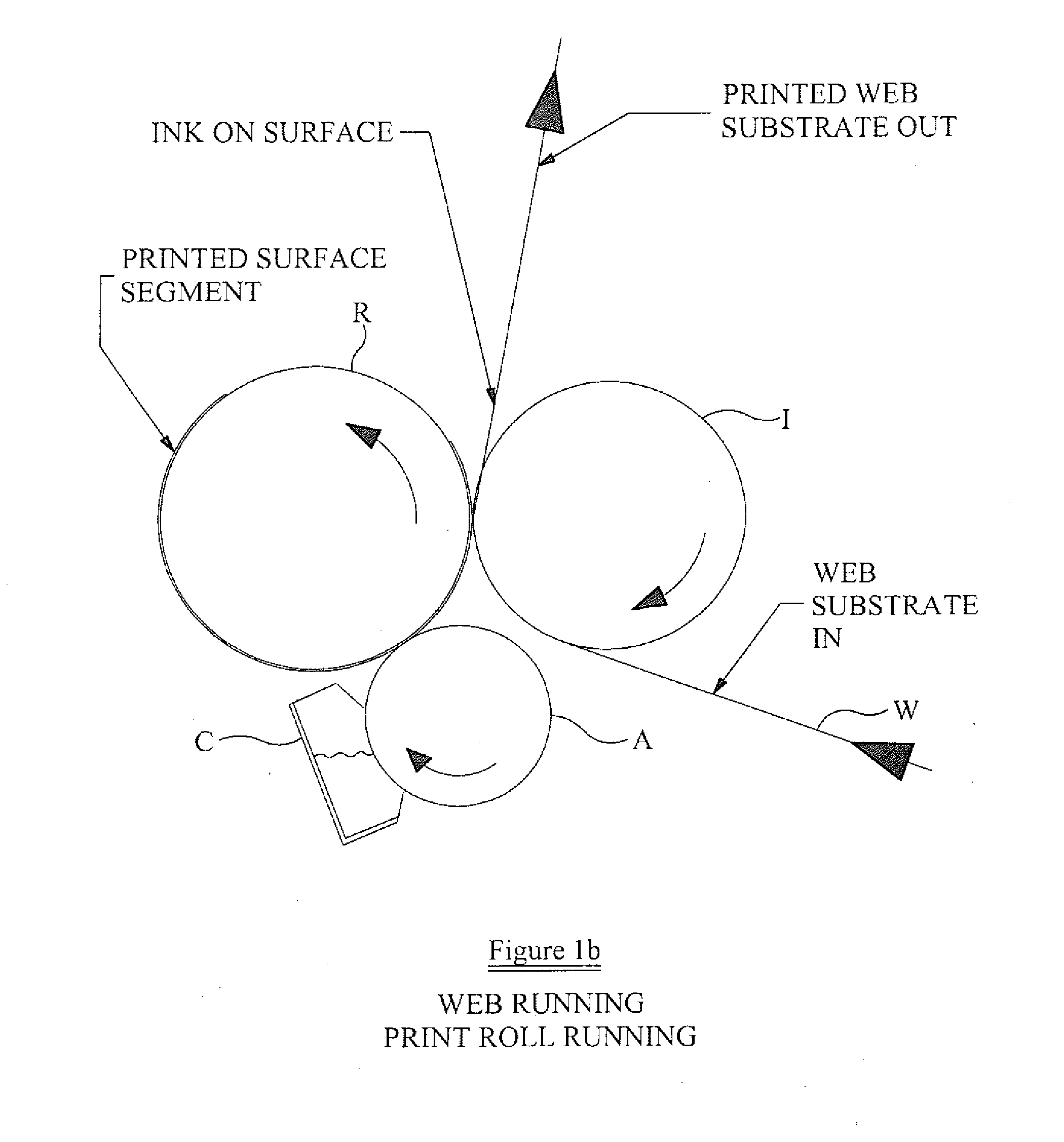Flexographic printing method and flexographic printing apparatus
a printing apparatus and flexographic technology, applied in printing presses, printing presses, rotary presses, etc., can solve the problems of inability of conventional flexographic printing systems to print images, laborious mechanical process of manufacture, and limited rate of production, so as to reduce the rotational increase the speed of the printing cylinder, and enhance the effect of image printing
- Summary
- Abstract
- Description
- Claims
- Application Information
AI Technical Summary
Benefits of technology
Problems solved by technology
Method used
Image
Examples
Embodiment Construction
[0055]For the purposes of this document, the term “web” is to be understood as any material or substrate that is suitable for feeding through a flexographic printing station and on which an image may be printed. The web may comprise a non-porous material, for example a non-porous substrate suitable for food packaging. The web may include plastic, metallic films, cellophane or paper material. The web may be a continuous web or individual pieces of web. The web may be, for example, a continuous sample of wallpaper and individual piece of wallpaper.
[0056]For the purposes of this document, the term “ink” is to be understood as any material that is suitable for forming an image on a web using a flexographic printing process. The ink may be dependent on the type of web being printed. The ink may be a solvent-based ink, water-based ink, electron beam curing ink, ultraviolet curing ink or a two part chemically curing ink.
[0057]For the purposes of this document, the term “image” is to be und...
PUM
 Login to View More
Login to View More Abstract
Description
Claims
Application Information
 Login to View More
Login to View More - R&D
- Intellectual Property
- Life Sciences
- Materials
- Tech Scout
- Unparalleled Data Quality
- Higher Quality Content
- 60% Fewer Hallucinations
Browse by: Latest US Patents, China's latest patents, Technical Efficacy Thesaurus, Application Domain, Technology Topic, Popular Technical Reports.
© 2025 PatSnap. All rights reserved.Legal|Privacy policy|Modern Slavery Act Transparency Statement|Sitemap|About US| Contact US: help@patsnap.com



